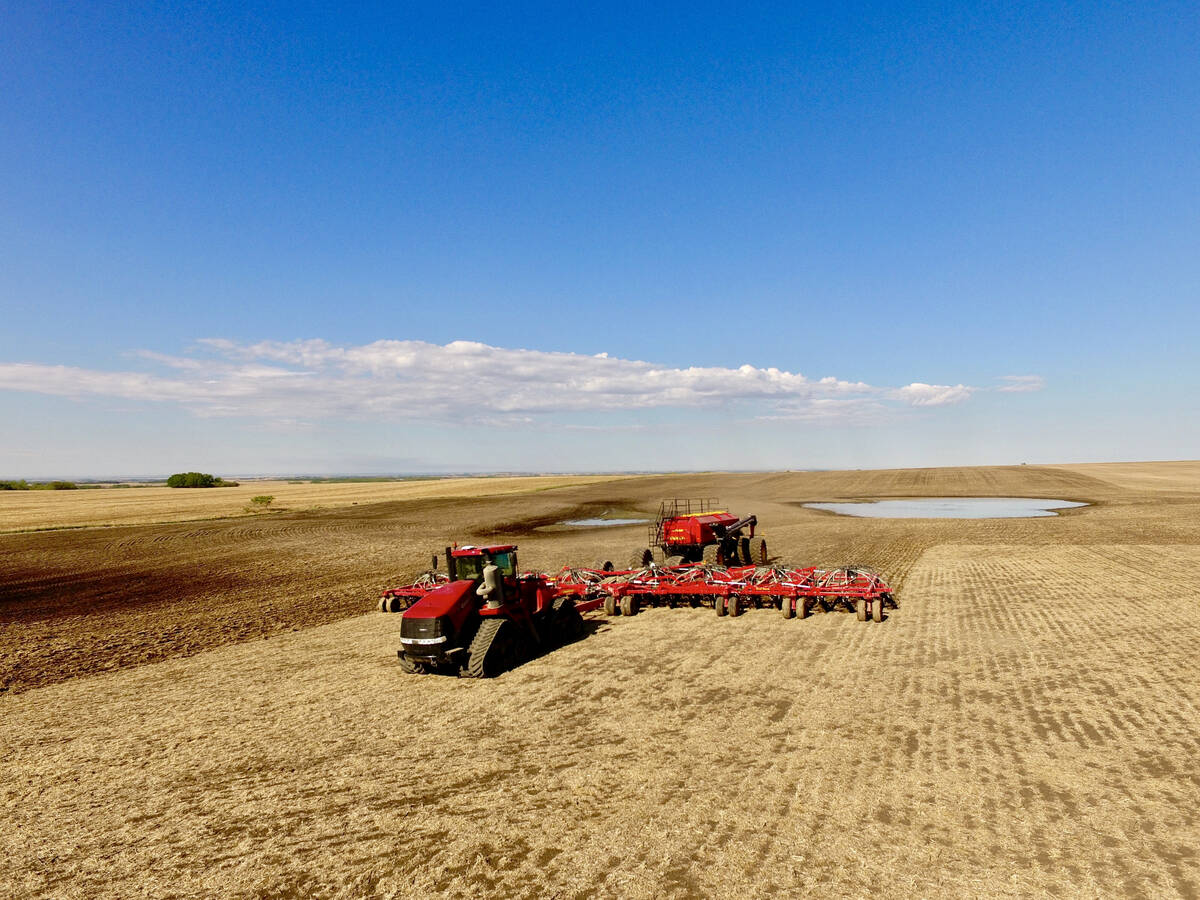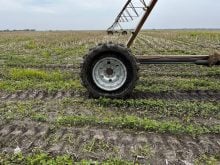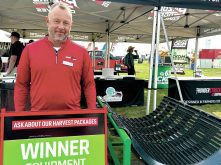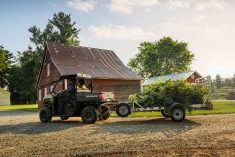Difficult decisions about equipment for your farm can go past horsepower, budget and acres per hour. In years where it just won’t stop raining, how does that impact your choices?
Tractors, drills and carts used during spring seeding all offer options to get through saturated soils. Big decisions will need to be made to address pest control mid-season, in regards to rate, chemical and application method. Heavy precipitation in the fall also has its own impacts on equipment.
Traction
Read Also
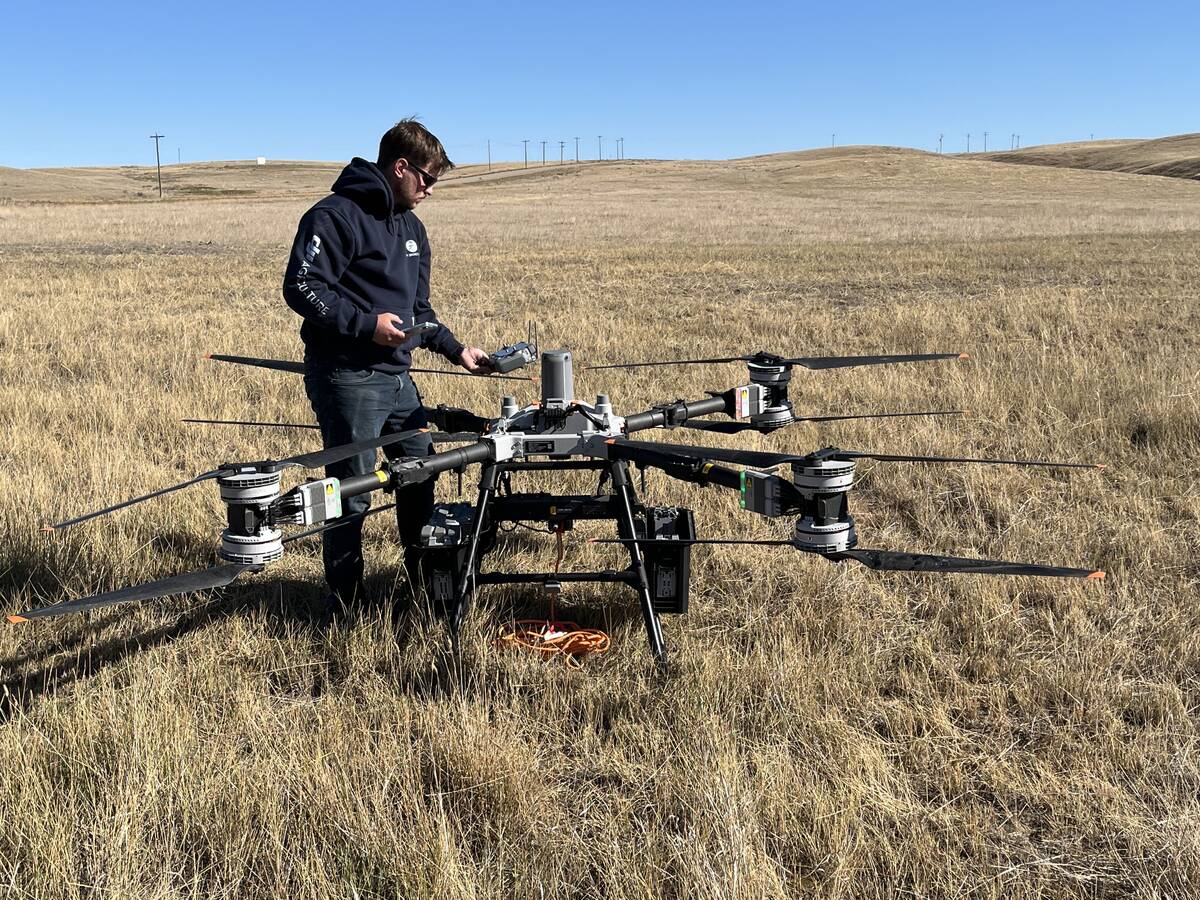
Farm-facing drone does the heavy lifting
Canadian distributor DJI Agriculture unveils its AGRAS T100 drone to western Canada’s producers for greater efficiencies in spraying and granular spreading in fields.
For the seeding tractor, there’s the great debate: tracks versus tires. Tracks offer less soil compaction, to which wet soils are more prone than dry soils, largely due to the fact that their pounds per square inch (p.s.i.) to the ground is always constant, whereas with tires, the p.s.i. can fluctuate depending on how the tire is inflated.
There are also tradeoffs to each option. Tracks come at a higher upfront cost, will require more maintenance down the road and require more horsepower to operate, but do offer better traction and less slippage, extremely important in wet conditions. Tires are cheaper upfront but also can become very costly if a large tire finds an antler shed in the wrong spot. A tractor with tires will also have an easier time getting out of a very sticky situation. The operator has the option to articulate the machine back and forth to get out of a deeper wet spot. Tires also have an advantage in that you can put on more than one. Duals, triples or super singles significantly help flotation and traction compared to standard singles.
Digging in
The air drill has many options to help deal with a wet spring. High-flotation tires on newer models help keep the whole machine from digging into soft spots; mudscrapers help shed built-up soil from the packer tire to ensure proper seed and fertilizer placement, while also protecting against mud from pushing into the tube when the row units lift out of the ground; and aftermarket mud-special openers will further help keep the system plug-free.
One interesting newer aftermarket option is the blockage prevention system from AirGuard, based out of Abbotsford, B.C. The system removes humidity — always prevalent with a high-moisture environment — from the product delivery system on the drill. This helps prevent fertilizer buildup inside the primary and secondary hoses to keep them clean and clear.
Sectional control will get a workout but proves its worth during years with an above-normal amount of turning. The great debate of tracks versus tires can also apply to the non-drive tires on an air cart, liquid caddy or anhydrous ammonia tank.
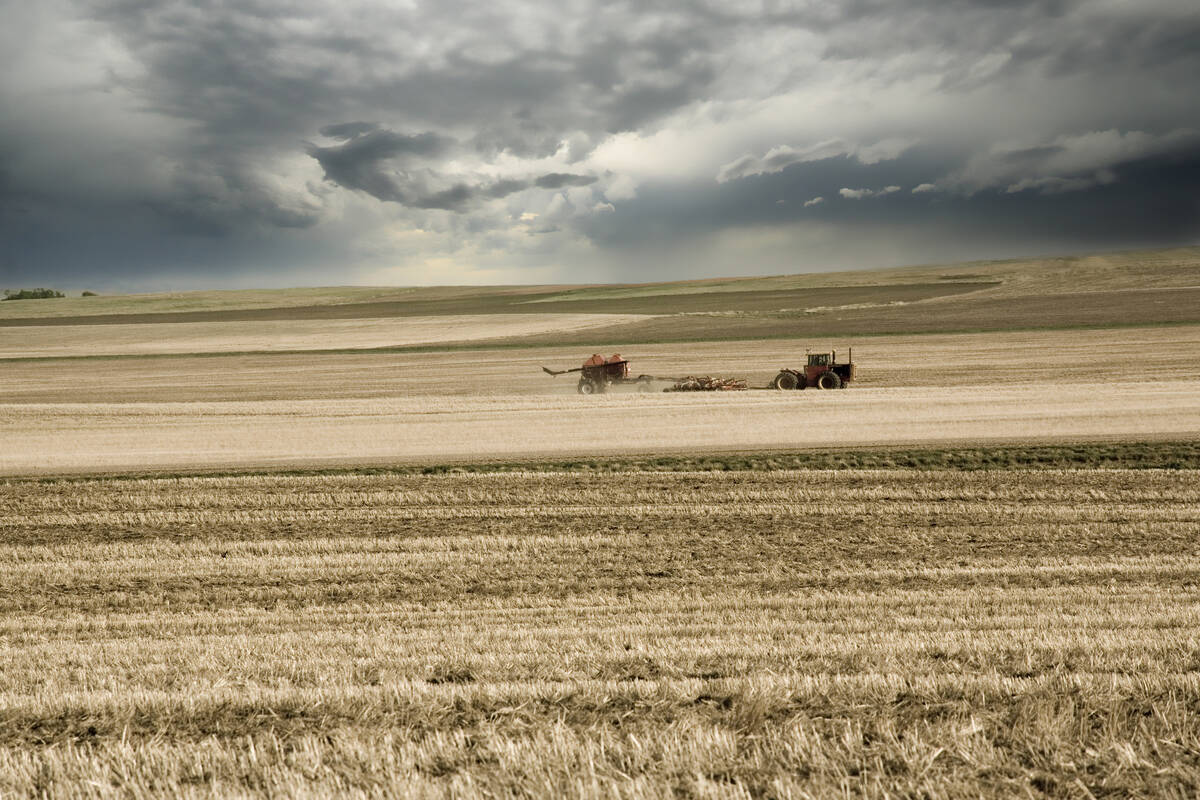
Driving hacks
How you operate the equipment in wet conditions differs as well. More moisture means more potholes to drive around, meaning the operator will have to take over from the autosteer. Although it can be painful to give up acres, it can save a lot of headache and potential trips out of the cab to leave a little extra room around these low spots. Making a wider turn is easier than crawling on the ground unplugging openers with a screwdriver. If it is on the extreme end of moisture conditions, it may even make sense to plan to seed the field in a certain pattern to avoid high-moisture areas immediately after filling the air cart when the weight is at its highest.
All of these aftermarket additions and management practices help combat the tough conditions one is up against during a spring where it just won’t stop raining.
Pesticide under precipitation
Areas of higher precipitation in the mid-growing season also call for different choices in sprayers. The biggest decision, if rain continually persists, is whether to use the more common self-propelled sprayer or call in an aerial applicator. Never mind the drawback of trampling of the self-propelled sprayer; leaving ruts and compaction behind will further impact yield for the current year, and potentially in years to follow. Such potential yield loss may be enough to pay the extra cost of an aerial applicator. The downside is that typically everybody in the affected region is in the same situation, and the custom applicator can become booked up — not ideal when spray timing is crucial for many chemicals.
During these high-moisture years, one can expect to spend less on herbicide as the crop canopy tends to out-compete the weeds, especially with an effective first-pass herbicide. The same can be said for insecticides, as pest insects tend to be less of a concern with more precipitation. On the flipside, fungicides tend to be applied more often than typically expected. More moisture deep in the crop canopy makes for an ideal micro-environment for disease to flourish. Diseases such as aphanomyces root rot can claim up to 70 per cent of potential yield in wet years with little to no management practices to counteract the infection. Toward the end of the growing season, the use of a desiccant can be expected, as the plant stand will have trouble drying down to an acceptable harvest moisture level.
Humid harvests
Excessive moisture during the harvest season presents its own set of problems. The tracks versus tires debate can also extend to the combine. All the same theories apply to this machine but as it serves a different purpose, some attributes may be more important than others.
Flotation may be the most important factor for the combine. With the header and a loaded hopper, there can be a significant amount of weight on the front axle of the machine. Better flotation on the front axle means it will dig less into a low spot. That said, the combine is the least used of the large machinery on a farm, compared to the working hours of a tractor or self-propelled sprayer. That makes the higher upfront cost of tracks less attractive than duals or super-single tires.
The same can be said for the grain cart. Although more common to see with tracks, mainly due to the perception of even weight distribution, the decision to go with tracks, duals or super-singles on the grain cart depends on the mindset of the individual farm. Once the crop has been harvested, moisture can play a big factor on how that crop is handled and stored. The hours put on a grain bagger can vary year-to-year, especially if grain is coming off tough. It’s a risky gamble to put wet grain in a bag for any amount of time.
To help with higher-moisture grain, a grain dryer would help bring that moisture down to an acceptable level. Many farms in northern areas have had grain dryers for a generation — but in recent years farmers in more southern regions have started to see the benefit. A year with substantial moisture in the fall will quickly make a producer realize the value of a grain dryer — not only having the ability to take off tough grain but also being able to start harvest earlier, simply to be able to cover more acres in the season, make a grain dryer an essential part of the farm operation. There is also the ever-looming risk of frost when a crop takes longer to mature due to a higher-moisture environment. Although it has happened many times, it is also less common to get an extremely wet fall compared to the rest of the growing season.
In years when the rain tap just won’t shut off, it’s not just the big equipment that’s affected. Having top-quality, appropriately sized and fully-intact tow straps on hand will usually help get a piece of equipment out of a sticky situation more than a time or two. It’s important to inspect tow straps after each use for wear and any signs of fatigue. And as always, never use chains.
Also, washing equipment has never been more important with the risk and spread of clubroot. Ideally, washing down each piece of equipment between each field will be the best way to prevent spread of the disease, but at the very minimum, washing the tires with a bleach solution can also lower the risk. If tough conditions do persist throughout the year and ruts are left behind, they will need to be repaired before next seeding season. Depending on the severity, a smaller disc or vertical tillage implement will be the best solution, even if it does mean an extra pass.
Ultimately, an abundance of precipitation during the growing season can change the equipment and how it’s used on a farm to help deal with the hand Mother Nature has dealt.
This situation always brings up another hot topic: which is worse, too dry or too wet? A small farmer outside Saskatoon once shared this knowledge: “I’d rather have it be too dry — even if there’s no crop out there. At least I can still get in the field to harvest what is there. Being too wet means I can’t even get in the field, and if I can, I might break something when I get stuck, and that costs money.”
I tend to find if a producer has dealt with more drought, they’d rather have a flood, and vice versa — but how you adjust your equipment to deal with the conditions is in your hands.

